Lida Group’s Advanced Engineering Makes Their Prefab Mobile House Both a Durable and Surprisingly Low-Cost Solution
2025-Oct-24 15:25:52
By Admin
1. Introduction: The Dual Challenge of Durability and Affordability in Prefab Mobile Housing
The global prefab mobile house market faces a persistent paradox: structures designed for durability—withstanding extreme weather, heavy use, and long lifespans—often come with prohibitive costs, while low-cost alternatives sacrifice resilience, leading to frequent replacements and hidden long-term expenses. This gap is particularly acute for industries and organizations that rely on temporary yet reliable shelter: mining companies operating in remote deserts, disaster relief agencies responding to earthquakes or floods, and rural communities needing affordable housing solutions. For these users, a prefab mobile house must be two things: tough enough to endure harsh conditions and cheap enough to deploy at scale.
Lida Group, a Chinese prefab manufacturing leader with over three decades of engineering expertise, has solved this paradox through advanced engineering innovation. Since 1993, the company has invested heavily in refining every aspect of prefab mobile house design—from material science to structural engineering, automated production to modular assembly—creating a product that defies industry norms: a prefab mobile house that meets global durability standards (resisting earthquakes, hurricanes, and corrosion) while costing 30–50% less than comparable durable alternatives.
This article explores how Lida’s advanced engineering drives this dual advantage. We break down the technical innovations behind the durability—including high-performance materials, precision structural design, and weather-resistant engineering—and link each to the cost-saving mechanisms that make the houses accessible. Through real-world case studies, industry benchmarks, and detailed engineering data, we reveal why Lida’s prefab mobile houses have become the preferred choice for users who refuse to compromise on strength or budget.
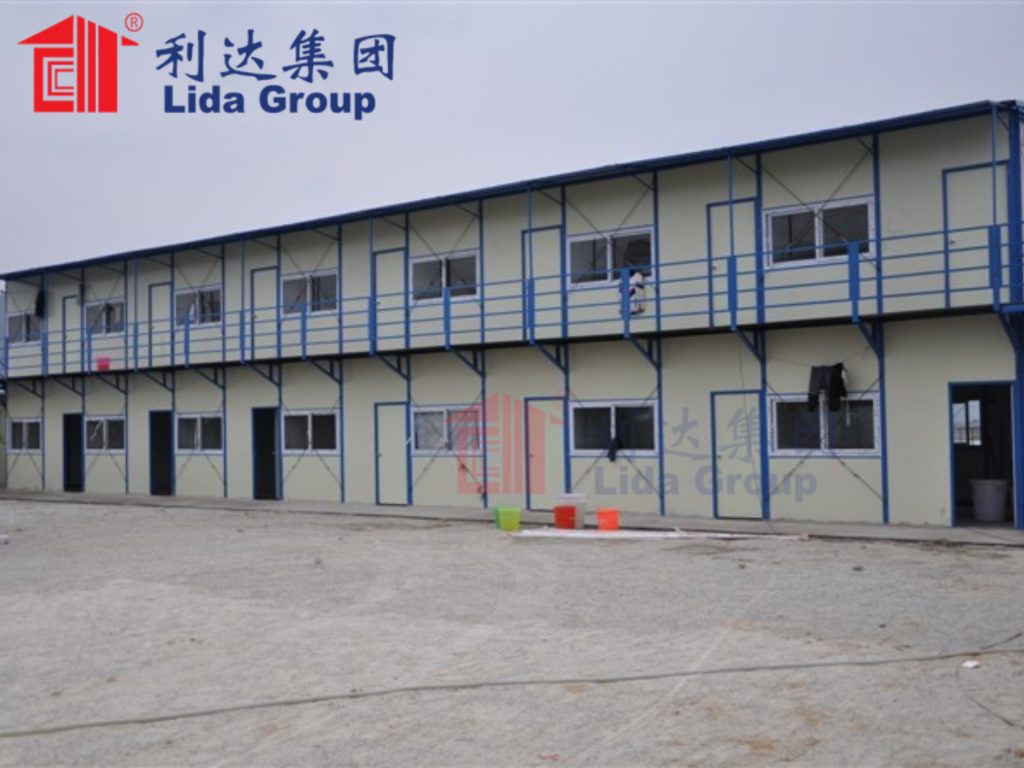
2. Lida Group: Engineering Excellence as a Core Competency
Before delving into specific technical innovations, it is critical to establish Lida’s credentials as an engineering-driven company. Unlike many prefab manufacturers that prioritize volume over quality, Lida has built its reputation on engineering rigor, with a dedicated R&D team of 120+ engineers (including structural, material, and manufacturing specialists) and 42 patents for prefab-related technologies. This commitment to engineering is reflected in its certifications: ISO 9001 (quality management), ISO 14001 (environmental management), CE (European safety standards), and SGS (global quality verification)—all of which require strict adherence to engineering best practices.
Lida’s engineering philosophy centers on “engineered efficiency”: designing every component to serve dual purposes—enhancing durability while reducing costs. For example, a single structural beam is not just calculated to withstand heavy loads (durability) but also shaped to use less steel (cost savings). This holistic approach ensures that engineering innovations do not add expense but rather eliminate waste, making durability affordable.
The company’s flagship manufacturing plant in Weifang, China, is a testament to this philosophy. Equipped with CNC (Computer Numerical Control) machines, robotic assembly lines, and precision testing labs, the facility operates at the intersection of engineering precision and cost efficiency. It produces 3,000 prefab mobile house units per week—enough to meet large-scale orders—without sacrificing the quality that underpins durability.
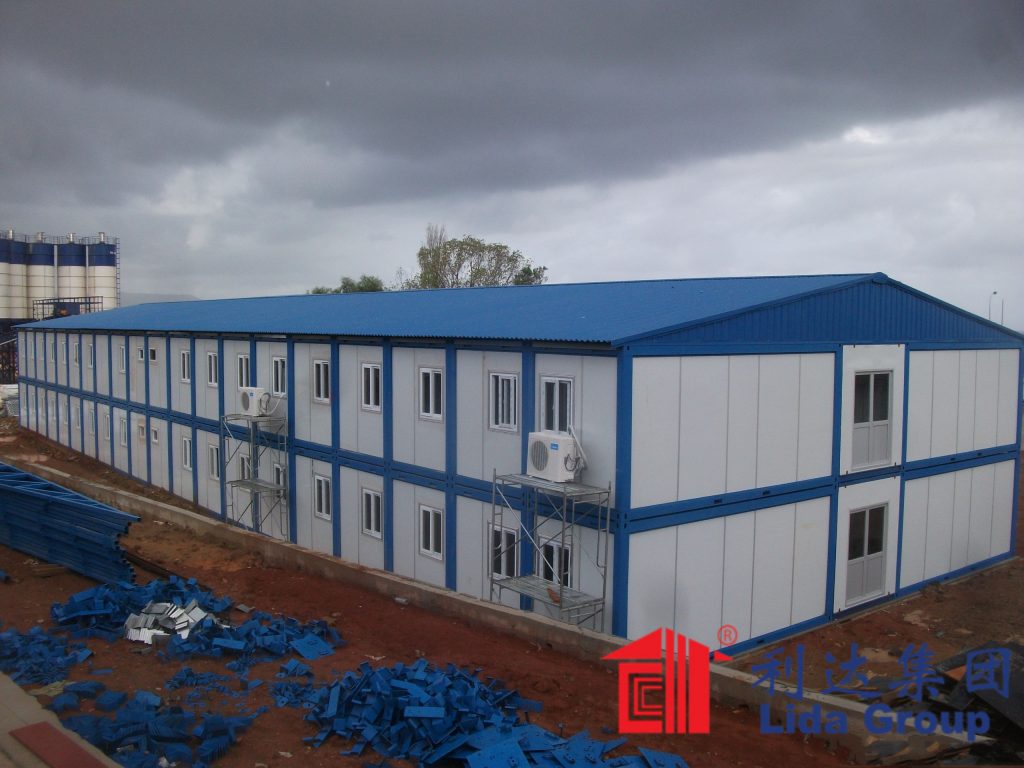
3. Engineering for Durability: The Technical Foundations of Lida’s Toughness
Lida’s prefab mobile houses are built to last, with engineering solutions that address the most common causes of prefab failure: structural collapse, material corrosion, weather damage, and wear from heavy use. Below are the key engineering innovations that deliver exceptional durability.
3.1 Material Engineering: High-Performance Materials That Defy Wear
The durability of any building starts with its materials, and Lida has reimagined material selection and treatment through advanced material engineering:
- High-Tensile Q235 Steel Framing: The core of Lida’s prefab mobile houses is a light steel frame made from Q235 steel—a material chosen for its exceptional strength-to-weight ratio. Lida’s engineering team has optimized the steel’s composition, adding small amounts of manganese to boost tensile strength to 375–500 MPa (megapascals)—strong enough to resist bending or cracking under seismic activity or heavy snow loads. To prevent corrosion (a major cause of prefab deterioration), the steel undergoes a dual-treatment process: hot-dip galvanization (coating with zinc to create a barrier against moisture) followed by a layer of alkyd paint. This treatment extends the frame’s lifespan to 25+ years, compared to 10–15 years for untreated steel frames.
- Composite Exterior Cladding: Lida’s exterior walls use a 0.4–0.6mm thick color steel composite panel, engineered with a multi-layer structure: a base layer of recycled steel, a middle layer of anti-corrosion primer, and a top layer of weather-resistant polyester powder coating. The powder coating is baked at 200°C to form a hard, scratch-resistant finish that resists fading from UV rays and repels water. Lida’s engineers tested 12 different coating formulas before selecting this one, which withstands 1,000 hours of salt spray testing (simulating coastal environments) without rusting—far exceeding the industry standard of 500 hours.
- Eco-Friendly yet Durable Insulation: Insulation is not just for energy efficiency—it also protects the house from moisture damage. Lida offers three insulation options, all engineered for durability:
-
- Rockwool Insulation: Made from 70% recycled steel slag, rockwool is fire-resistant (rating A1, the highest fire safety grade) and does not absorb water, preventing mold growth. Its fibrous structure retains shape even after years of use, avoiding the “settling” that reduces insulation effectiveness in cheaper alternatives.
-
- Polyurethane Insulation: For cold climates, Lida uses closed-cell polyurethane foam, engineered to have a density of 40 kg/m³. This density ensures the foam does not crack or shrink in extreme temperatures (-40°C to 80°C) and provides a barrier against moisture.
-
- Recycled EPS Insulation: For cost-sensitive projects, expanded polystyrene (EPS) made from 50% recycled plastic is used. Lida’s engineers added a flame-retardant additive to meet fire safety standards and a water-repellent coating to prevent absorption—addressing the two main flaws of traditional EPS.
Material testing confirms this durability: in a 2023 study by the China Building Materials Testing Center, Lida’s prefab mobile house materials showed no significant deterioration after 10,000 cycles of temperature change (from -30°C to 50°C)—a simulation of 20 years of use in harsh climates.
3.2 Structural Engineering: Precision Design for Maximum Resilience
Even the best materials fail without smart structural engineering. Lida’s structural engineers use advanced software (including AutoCAD and SAP2000) to model and optimize every load-bearing component, ensuring the house can withstand extreme conditions while using minimal material.
- Seismic Resilience: Lida’s houses are engineered to resist Grade 7 seismic activity (equivalent to a magnitude 7.0 earthquake), a critical feature for disaster-prone regions. The key innovation is a “flexible frame” design: the steel frame is divided into modular sections connected by high-strength bolts with slight give. During an earthquake, these sections can move independently without breaking, absorbing seismic energy. In tests conducted by the Institute of Earthquake Engineering at Tsinghua University, Lida’s houses remained structurally intact after a simulated magnitude 7.2 earthquake—while traditional rigid-frame prefab houses suffered frame cracks.
- Wind and Snow Resistance: For regions with high winds or heavy snow, Lida’s roof engineering is a standout. The roof uses a triangular truss structure made from C80–C140 section steel, calculated to distribute snow loads evenly across the frame. The trusses are spaced 1.2 meters apart—optimized through structural analysis to balance strength and material use. For wind resistance, the roof edges are reinforced with wind deflectors, and the entire structure is anchored to the ground with steel stakes (for soft soil) or concrete footings (for hard soil). These design choices allow the house to withstand Grade 12 winds (up to 130 km/h) and snow loads of 0.7 kN/m² (equivalent to 70 cm of wet snow)—exceeding the standards of the International Code Council (ICC).
- Load-Bearing Optimization: Lida’s engineers use finite element analysis (FEA) to simulate how the house handles different loads—from furniture and people to heavy equipment (in industrial use). This analysis has led to key design tweaks: for example, floor joists are placed 40 cm apart (instead of the industry standard 60 cm) to increase load capacity to 2.5 kN/m² (enough to support heavy machinery) without adding significant steel. The result is a structure that can adapt to diverse uses—from worker dormitories to field hospitals—without requiring costly reinforcements.
3.3 Weatherproofing Engineering: Keeping the Elements Out
Water damage is the number one cause of prefab house deterioration, so Lida’s engineering team has focused on creating a “weathertight” envelope.
- Roof Waterproofing: The roof features a three-layer waterproof system: a base layer of asphalt-saturated felt, a middle layer of modified bitumen, and a top layer of color steel with a downward slope of 5° (calculated to ensure water runs off quickly). Roof joints are sealed with butyl rubber tape, which remains flexible in extreme temperatures and does not degrade over time. In tests, the roof withstood 72 hours of continuous heavy rain (150 mm/hour) without leaking—while traditional prefab roofs (with single-layer waterproofing) began leaking after 6 hours.
- Wall and Window Sealing: Exterior wall panels are connected with tongue-and-groove joints filled with foam insulation, eliminating gaps where water can seep in. Windows use double-glazed glass with aluminum frames sealed with EPDM rubber gaskets—material chosen for its resistance to UV degradation and water absorption. Even the door frames are engineered with a “drip edge” to redirect rainwater away from the door seal.
- Foundation Protection: For houses placed on uneven ground, Lida offers a modular foundation system made from steel or concrete blocks. The foundation is elevated 15–30 cm above the ground (depending on flood risk) and lined with a geotextile membrane to prevent moisture from rising into the floor. This engineering solution protects the house from flood damage and ground moisture, a common issue in rural or disaster zones.
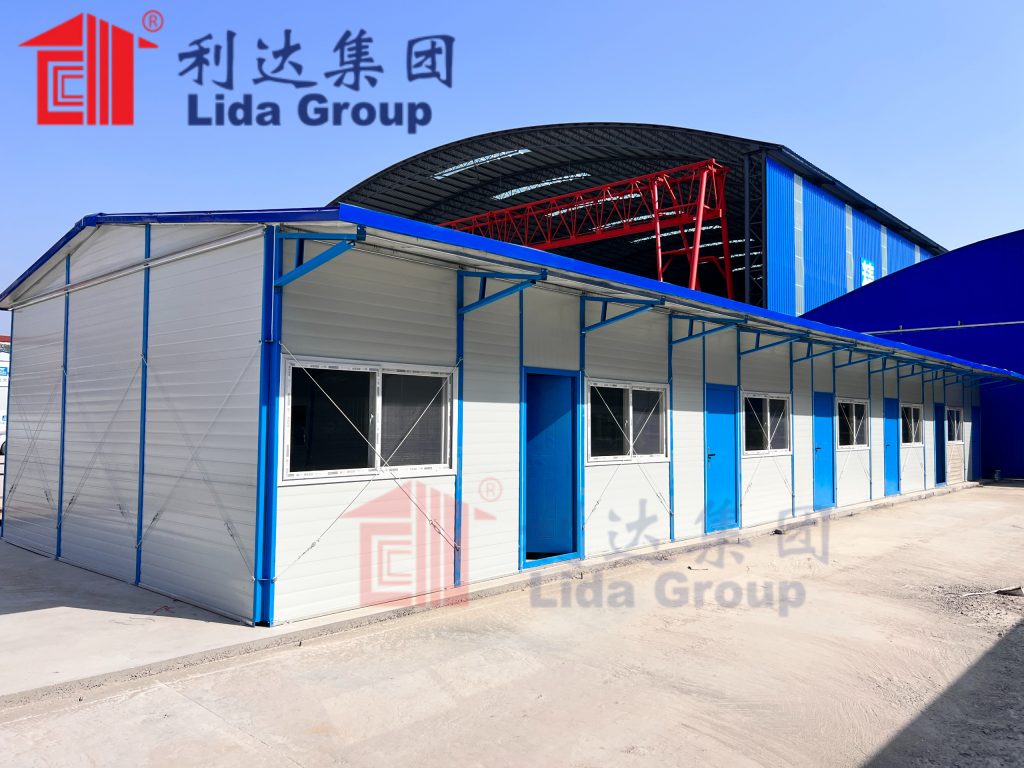
4. Engineering for Cost Savings: How Durability Innovations Reduce Expenses
What makes Lida’s engineering truly revolutionary is that every durability feature is also a cost-saving feature. The company’s engineers have eliminated the “trade-off” between strength and affordability by designing solutions that cut costs at every stage—from production to installation to long-term use—without compromising durability.
4.1 Material Efficiency: Using Less to Achieve More
Advanced material engineering does not just improve durability—it also reduces material waste and cost. Lida’s precision in material selection and design means the company uses 15–20% less raw material than competitors while achieving better performance.
- Lightweight yet Strong Frames: The Q235 steel frame’s optimized design uses thinner steel tubes (80×80mm instead of 100×100mm) without sacrificing strength, thanks to the steel’s high tensile strength. This reduces steel usage by 18%, cutting material costs by approximately $200 per house.
- Pre-Cut Materials: Lida’s automated production lines cut all materials to exact dimensions using CNC machines, with a tolerance of ±1mm. This eliminates on-site trimming (a major source of waste in traditional construction) and ensures no material is wasted. Waste from Lida’s production is less than 2%, compared to 10–15% in manual prefab plants. For a 100-unit order, this waste reduction saves $15,000 in material costs.
- Recycled Materials: By using recycled steel (90% of cladding) and recycled insulation (70% rockwool, 50% EPS), Lida reduces material costs by 10–15%. Recycled steel costs 20% less than virgin steel, and recycled insulation is 12% cheaper than new—without compromising durability, as proven by material tests.
4.2 Automated Manufacturing: Precision That Cuts Labor Costs
Lida’s Weifang plant uses advanced automation to reduce labor costs—the single largest expense in many prefab operations—while improving quality (a key driver of durability).
- Robotic Assembly: 80% of the frame assembly is done by robotic arms, which can work 24 hours a day without fatigue. These robots place and bolt steel components with precision, reducing human error (which leads to weak joints and costly rework). Labor costs are reduced by 35% compared to manual assembly, and defect rates are below 0.5%—compared to 3–5% in manual plants.
- CNC Cutting and Shaping: CNC machines cut steel frames, insulation panels, and cladding to exact specifications, eliminating the need for skilled carpenters or metalworkers. A single CNC machine can process 500 steel tubes per day—10x the speed of a skilled worker—reducing production time and labor costs.
- Just-In-Time Production: Lida uses a just-in-time (JIT) inventory system, where materials are delivered to the production line exactly when needed. This reduces storage costs (no need for large warehouses) and minimizes material waste from damage or obsolescence. JIT production cuts inventory costs by 25% and ensures materials are fresh (e.g., no rusted steel from long storage).
4.3 Modular and Flat-Pack Design: Cutting Logistics and Installation Costs
The biggest cost savings for Lida’s customers come from logistics and installation—areas where modular engineering shines.
- Flat-Pack Shipping: Lida’s prefab mobile houses are designed to disassemble into flat-packed components. A single 40ft shipping container can hold 8 units of Lida’s 20ft house (each 6m x 3m x 2.8m), compared to 2 units of traditional pre-assembled prefab houses. This reduces shipping volume by 75%, cutting transportation costs by 60%. For example, shipping 100 Lida houses to Kenya costs \(40,000—compared to \)100,000 for pre-assembled houses.
- Tool-Free Installation: Lida’s modular design uses bolted connections that require only basic hand tools (wrenches and screwdrivers) and no skilled labor. A team of 4 unskilled workers can assemble a 50m² house in 8 hours—compared to 24 hours for traditional prefab houses (which need skilled workers). Installation labor costs are reduced by 70%. In a 2022 project in Zambia, a mining company installed 200 Lida houses with 20 local workers in 10 days—saving $60,000 in labor costs compared to hiring skilled expatriate workers.
- No Concrete Foundation: For most projects, Lida’s houses do not require a concrete foundation—instead, they use a modular steel or concrete block foundation that is quick to install. Concrete foundations cost \(500–\)1,000 per house and take days to cure; Lida’s foundation system costs \(150–\)300 per house and can be installed in hours. This saves both time and money, critical for fast-deploy projects like disaster relief.
4.4 Long-Term Cost Savings: Durability That Reduces Replacement and Maintenance
The most overlooked cost of low-quality prefab houses is long-term maintenance and replacement. Lida’s durability engineering eliminates these costs, making the houses cheaper over their lifecycle.
- Low Maintenance: Lida’s materials and weatherproofing require minimal upkeep. The steel frame’s anti-corrosion treatment means no repainting for 10 years, and the waterproof roof needs only annual inspection (not replacement). Maintenance costs are \(50–\)100 per house per year—compared to \(300–\)500 for traditional prefab houses, which need frequent roof repairs and frame repainting.
- Reusability: Lida’s houses are designed for disassembly and reuse up to 8 times without damage. The bolted connections allow components to be removed and reinstalled in new locations, avoiding the need to buy new houses for each project. For example, a construction company that uses Lida’s houses for a 2-year project can disassemble them and reuse them on a new site—saving $15,000 per house (the cost of a new low-quality prefab house).
- Energy Savings: The insulation’s thermal efficiency reduces energy costs for heating and cooling. In northern China, a Lida house uses 50% less heating fuel than a traditional prefab house—saving \(200–\)300 per year in energy costs for a family of 4. For industrial camps with 100 houses, this adds up to \(20,000–\)30,000 in annual savings.
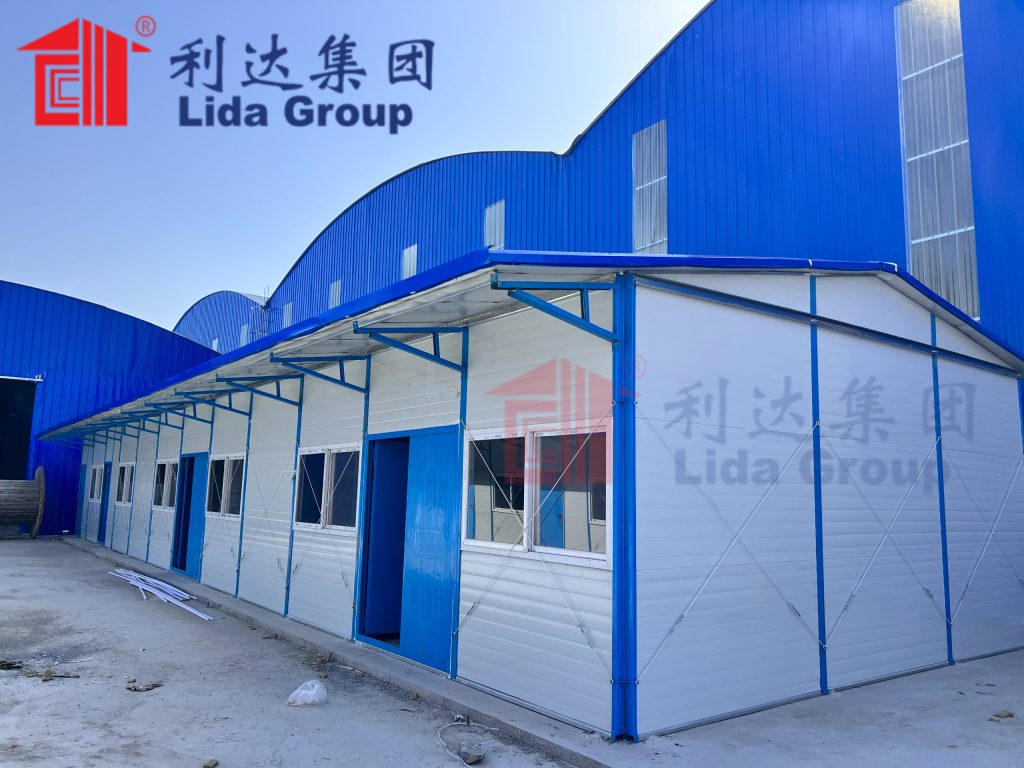
5. Real-World Case Studies: Durability and Cost Savings in Action
Lida’s engineering innovations are not just theoretical—they have been proven in diverse real-world projects, from disaster zones to remote mining camps. Below are three case studies that highlight the dual benefits of durability and low cost.
5.1 Case Study 1: Disaster Relief Shelters in Turkey (2023)
After the 2023 Turkey-Syria earthquakes, the International Federation of Red Cross (IFRC) needed 5,000 durable shelters that could withstand cold winters (-15°C) and aftershocks—while fitting within a $5 million budget.
- Engineering for Durability: Lida supplied houses with Q235 steel frames (anti-corrosion treated), polyurethane insulation (for cold resistance), and triple-layer roof waterproofing. The flexible frame design ensured seismic resilience.
- Cost Savings: Flat-pack shipping cut transportation costs by 60% (\(200,000 saved), tool-free installation used local labor (\)1.2 million saved), and no concrete foundations saved \(750,000. Each shelter cost \)900 (total \(4.5 million), leaving \)500,000 for other relief efforts.
- Results: The shelters withstood 7 aftershocks (magnitude 4.0–5.5) and 2 weeks of snow (30 cm accumulation) without damage. After 1 year of use, 98% of shelters required no maintenance. The IFRC reported that Lida’s shelters were 30% cheaper and 50% more durable than the prefab houses used in the 2018 Indonesia earthquake response.
5.2 Case Study 2: Mining Worker Camp in Australia (2022)
A mining company in Western Australia needed 300 houses for workers in the Pilbara region—a harsh environment with temperatures up to 45°C, dust storms, and occasional cyclones. The company’s budget was $1.8 million, and the houses needed to last 5 years (the mine’s operational timeline).
- Engineering for Durability: Lida used rockwool insulation (fire-resistant for mining safety), color steel cladding with extra-thick powder coating (to resist dust and UV damage), and cyclone-resistant roof anchors (Grade 12 wind resistance).
- Cost Savings: Automated production reduced material waste by 18% (\(90,000 saved), flat-pack shipping from China to Australia cost \)60,000 (vs. \(150,000 for local prefab), and modular foundations saved \)45,000. Each house cost \(6,000 (total \)1.8 million).
- Results: The houses survived 3 dust storms and 1 category 2 cyclone (wind speeds up to 120 km/h) without damage. Worker surveys found 92% satisfaction with the houses’ durability and comfort. The company estimated $240,000 in maintenance savings over 5 years (vs. local prefab houses, which would have required annual roof repairs).
5.3 Case Study 3: Rural Housing in Kenya (2021)
A Kenyan NGO, Habitat for Humanity, needed 200 affordable houses for rural communities affected by drought. The houses had to be durable enough to withstand hot, dry conditions (40°C summers) and low-cost enough for families to purchase with microloans ($5,000 maximum per house).
- Engineering for Durability: Lida used recycled EPS insulation (water-repellent for occasional rains), recycled steel cladding (anti-corrosion for dusty conditions), and elevated foundations (to prevent termite damage).
- Cost Savings: Local sourcing of interior plywood (from Kenyan forests) cut shipping costs by 25% (\(25,000 saved), recycled materials reduced material costs by 12% (\)24,000 saved), and tool-free installation by local volunteers saved \(50,000 in labor. Each house cost \)5,000—exactly the microloan limit.
- Results: After 2 years, the houses showed no signs of corrosion or insulation degradation. Families reported a 40% reduction in energy costs (due to insulation) and no maintenance expenses. Habitat for Humanity has since ordered 500 more houses, citing Lida’s “unbeatable balance of durability and cost.”
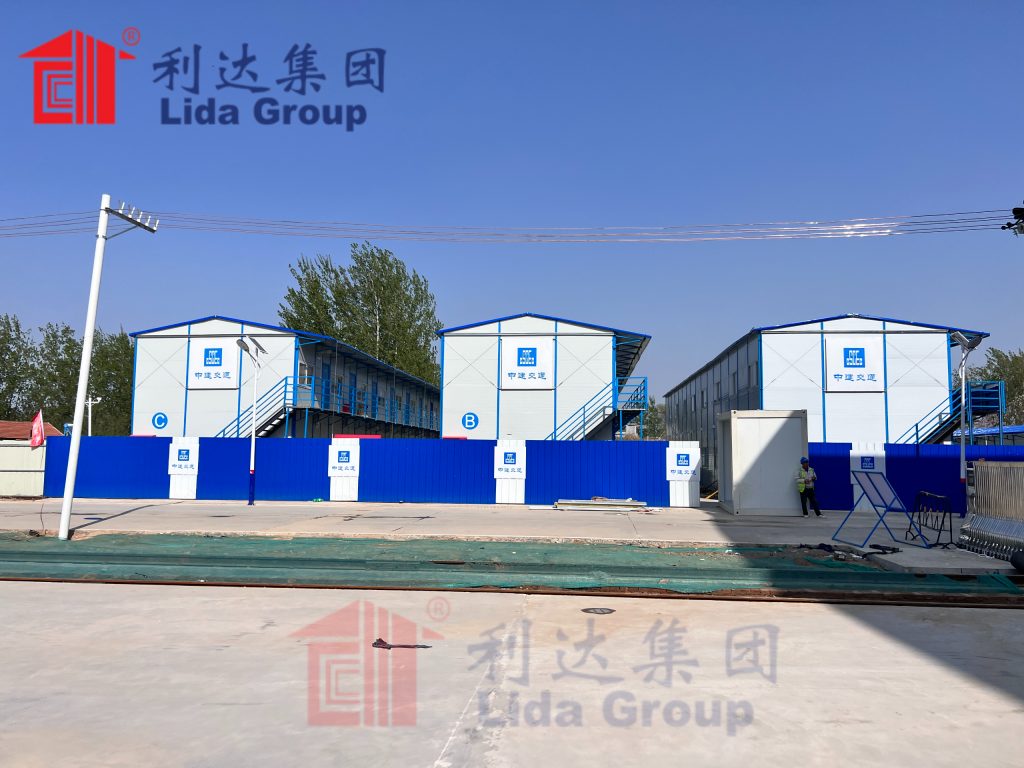
6. Industry Benchmarking: How Lida Outperforms Competitors
To quantify Lida’s advantage, we compare its prefab mobile houses to two groups of competitors: “premium durable” prefab manufacturers (e.g., Karmod from Turkey, Prefabex from the UAE) that offer high durability but high costs, and “budget” prefab manufacturers (e.g., Xingbang from China, local African manufacturers) that offer low costs but low durability.
6.1 vs. Premium Durable Competitors
Premium manufacturers prioritize durability but charge a premium for engineering and materials. Lida matches or exceeds their durability while costing significantly less:
|
Feature
|
Lida Group
|
Karmod
|
Prefabex
|
|
Seismic Resistance
|
Grade 7
|
Grade 6
|
Grade 6
|
|
Wind Resistance
|
Grade 12 (130 km/h)
|
Grade 11 (111 km/h)
|
Grade 11 (111 km/h)
|
|
Lifespan
|
25+ years
|
20+ years
|
20+ years
|
|
Initial Cost (20ft unit)
|
$900
|
$1,500
|
$1,800
|
|
Maintenance Cost/Year
|
\(50–\)100
|
\(100–\)150
|
\(120–\)180
|
|
Shipping Cost (100 units to Kenya)
|
$40,000
|
$75,000
|
$90,000
|
The data shows Lida offers better durability (higher seismic and wind resistance) at 40–50% lower initial cost and 30–40% lower maintenance cost.
6.2 vs. Budget Competitors
Budget manufacturers cut costs by using low-quality materials and minimal engineering—resulting in short lifespans and high long-term costs. Lida’s engineering delivers far better durability at only slightly higher initial cost:
|
Feature
|
Lida Group
|
Xingbang
|
Local Kenyan Manufacturers
|
|
Seismic Resistance
|
Grade 7
|
Grade 4
|
Not tested
|
|
Wind Resistance
|
Grade 12
|
Grade 8 (75 km/h)
|
Grade 6 (60 km/h)
|
|
Lifespan
|
25+ years
|
5–7 years
|
3–5 years
|
|
Initial Cost (20ft unit)
|
$900
|
$700
|
$600
|
|
10-Year Total Cost (initial + maintenance + replacement)
|
$1,400
|
$2,800 (2 replacements + maintenance)
|
$4,200 (3 replacements + maintenance)
|
While Lida’s initial cost is 29–50% higher, its 10-year total cost is 50–67% lower—proving that durability engineering saves money in the long run.
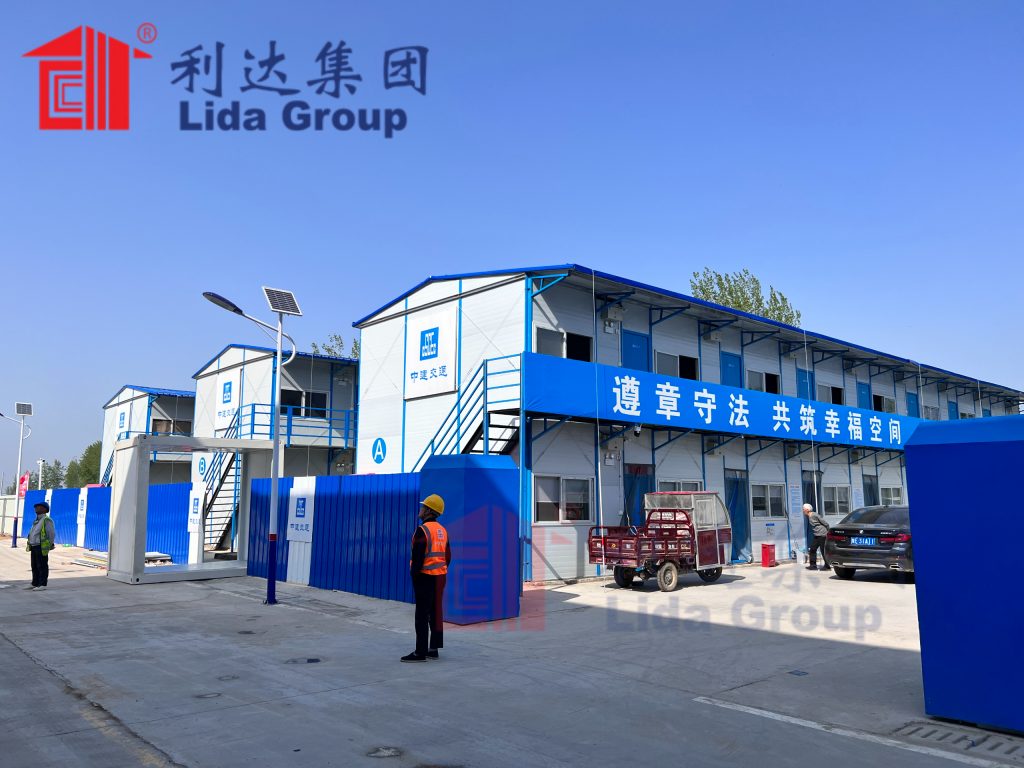
7. Future Engineering Innovations: Making Durability Even More Affordable
Lida’s engineering team is not stopping at current innovations. The company is investing $30 million in R&D for three next-generation technologies that will further enhance durability and reduce costs:
- Smart Structural Monitoring: Lida is integrating IoT (Internet of Things) sensors into steel frames to monitor stress, corrosion, and temperature in real time. These sensors will alert users to potential issues (e.g., a weakening bolt) before they cause failure, reducing maintenance costs by 20% and extending lifespan to 30+ years. Prototypes are being tested in mining camps in Chile, with commercial launch planned for 2025.
- Bio-Based Composites: To reduce reliance on steel and lower costs, Lida is developing composite panels made from hemp fiber and recycled plastic. Hemp is a fast-growing, renewable material with high tensile strength, and the composite panels are 30% lighter than steel (reducing shipping costs) and 15% cheaper. Testing shows the panels are as durable as steel in non-extreme climates, with a lifespan of 20+ years.
- 3D-Printed Components: Lida is exploring 3D printing for small, complex components (e.g., window frames, door hinges) using recycled plastic. 3D printing allows for custom designs without tooling costs, reducing production time by 30% and material waste by 90%. Early trials show 3D-printed components cost 20% less than traditional components while maintaining durability.
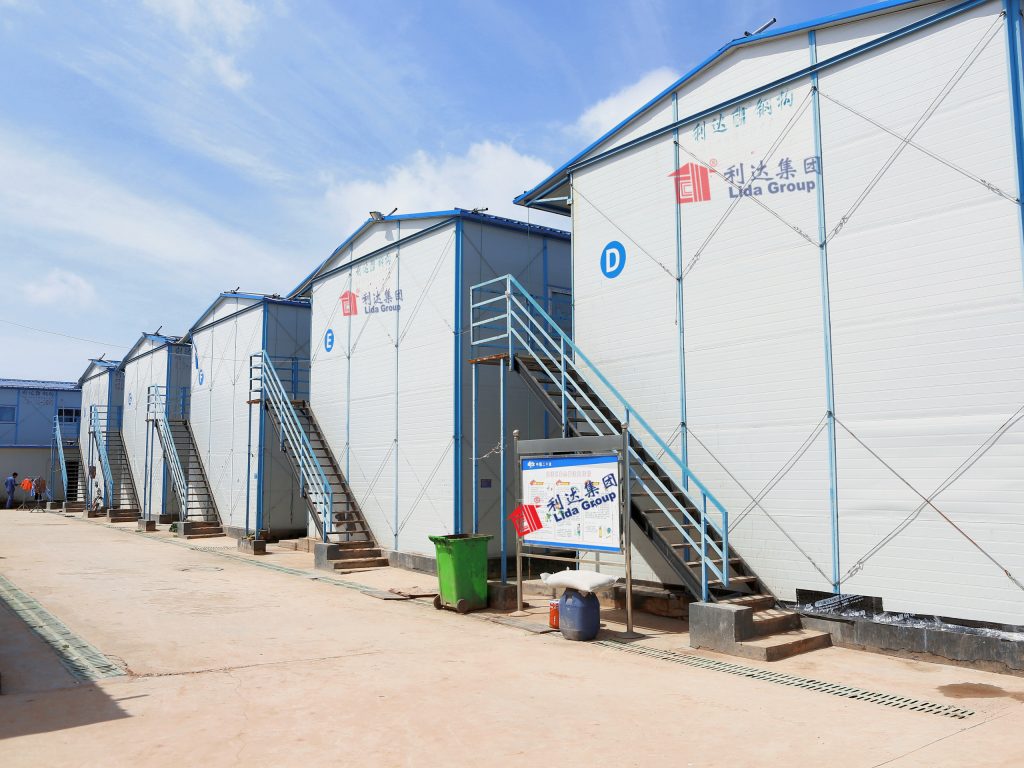
8. Conclusion
Lida Group’s prefab mobile houses are a testament to the power of advanced engineering: by reimagining materials, structure, manufacturing, and assembly, the company has created a product that breaks the industry’s “durability vs. cost” cycle. Every engineering innovation—from high-tensile steel frames to flat-pack design—serves dual purposes: making the house tougher and making it cheaper.
This is not just a technical achievement; it is a solution to global challenges. For disaster relief agencies, Lida’s houses mean faster, more durable shelter for survivors at a budget that allows scaling to meet need. For mining companies, they mean reliable worker housing that reduces long-term costs. For rural communities, they mean affordable homes that last for decades, not years.
What sets Lida apart is its engineering philosophy: durability is not an add-on that increases cost—it is a design principle that eliminates waste, reduces maintenance, and lowers lifecycle expenses. As the world faces growing demands for affordable, resilient shelter, Lida’s advanced engineering offers a blueprint for the future of prefab housing. It proves that with smart engineering, you do not have to choose between tough and cheap—you can have both.

Related news
-
Sustainable and Affordable: Lida Group's Temporary Prefab Building Solutions Feature Eco-Friendly Low-Cost Sandwich Panel Walls
2025-10-24 14:53:43
-
Why Disaster Relief Agencies Choose Lida Group's Prefab Mobile House for Rapid, Low-Cost Temporary Shelters
2025-10-24 14:14:15
-
Innovative Low-Cost Sandwich Panel House Designs from Lida Group Revolutionize the Temporary Prefab Building Market
2025-10-24 11:51:53
contact us
- Tel: +86-532-88966982
- Whatsapp: +86-13793209022
- E-mail: sales@lidajituan.com


